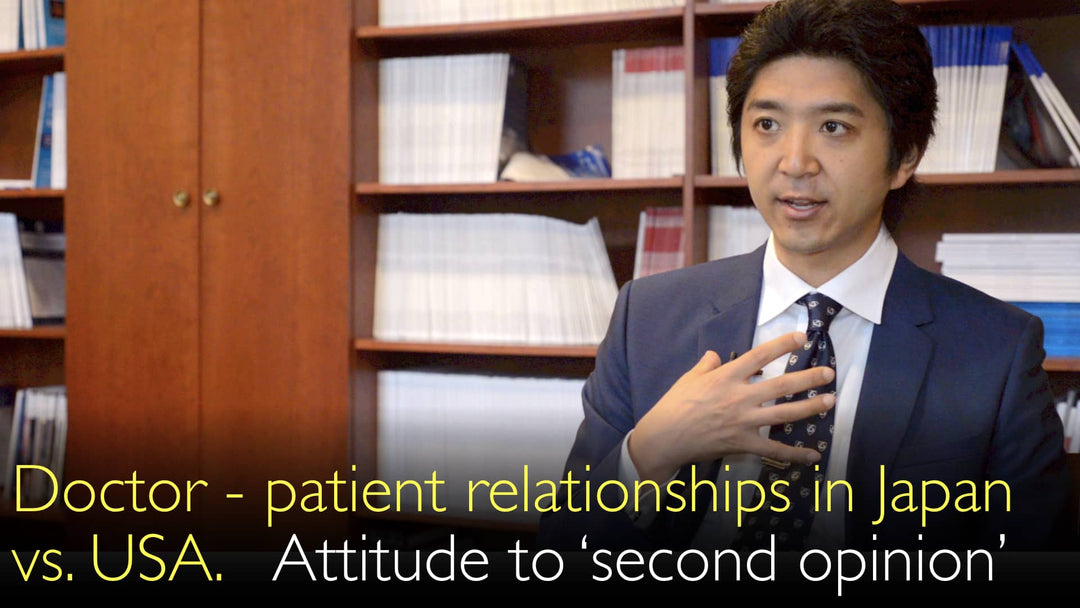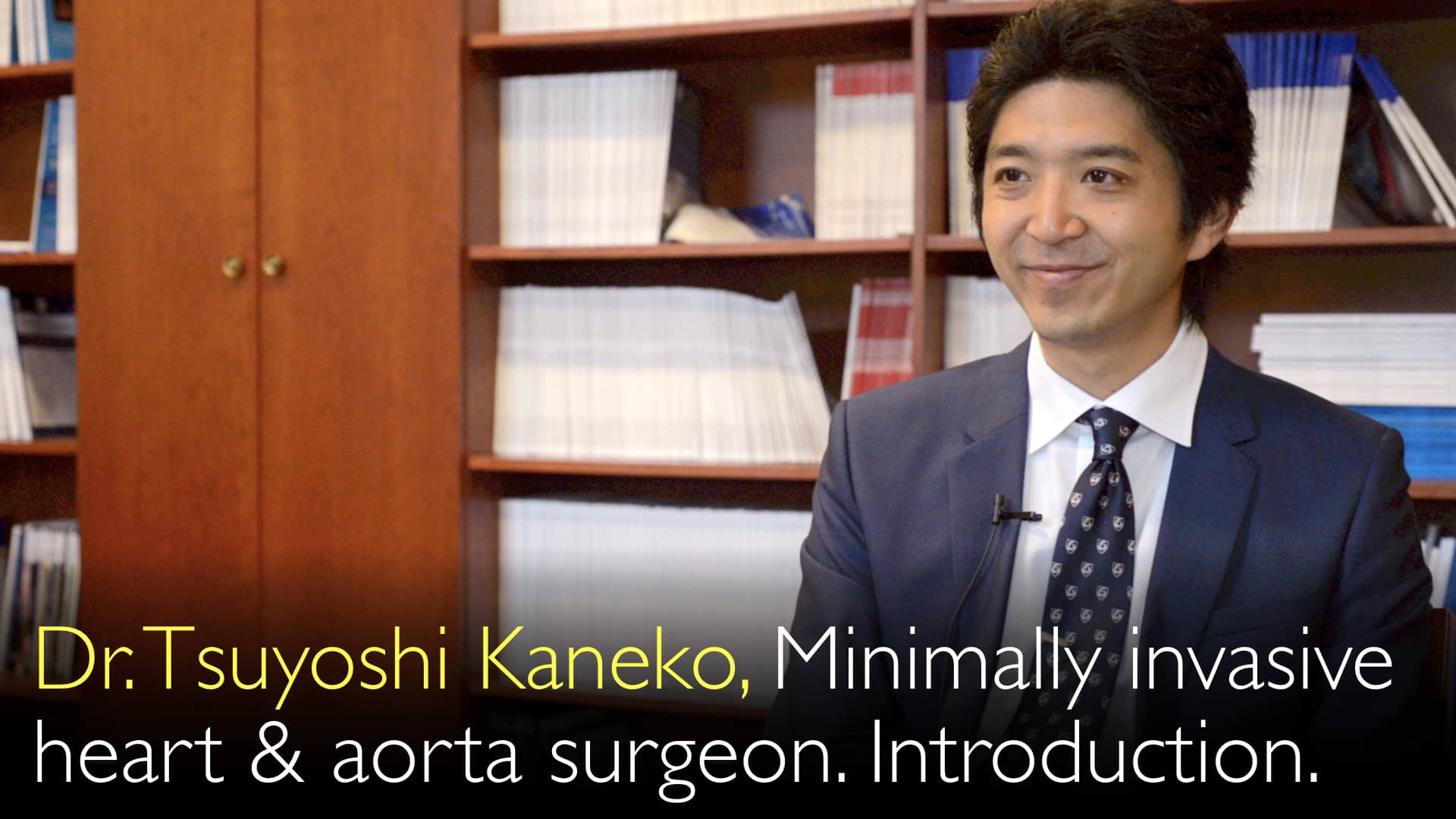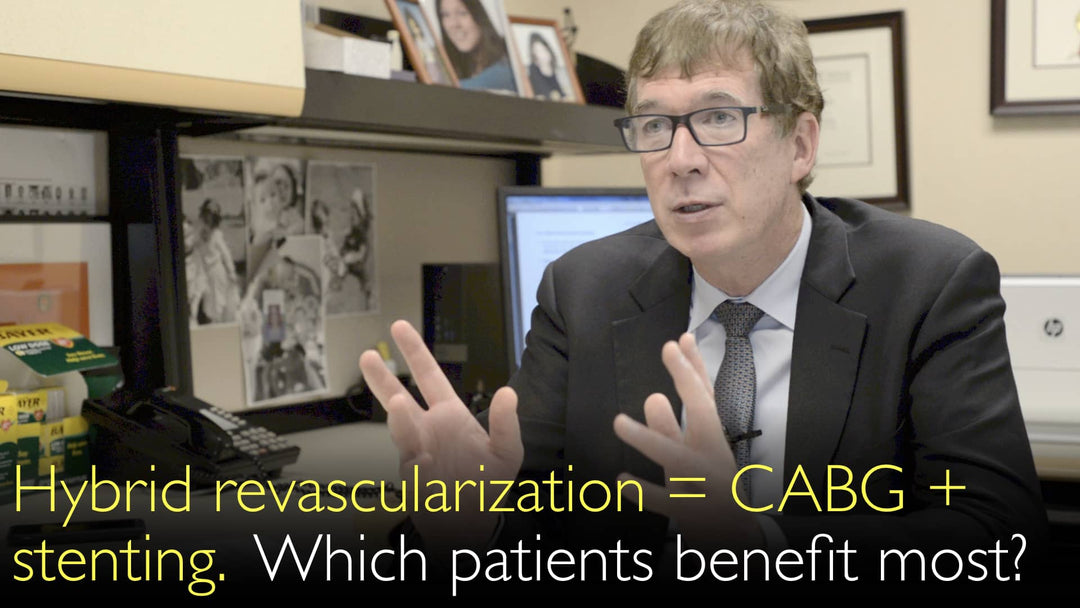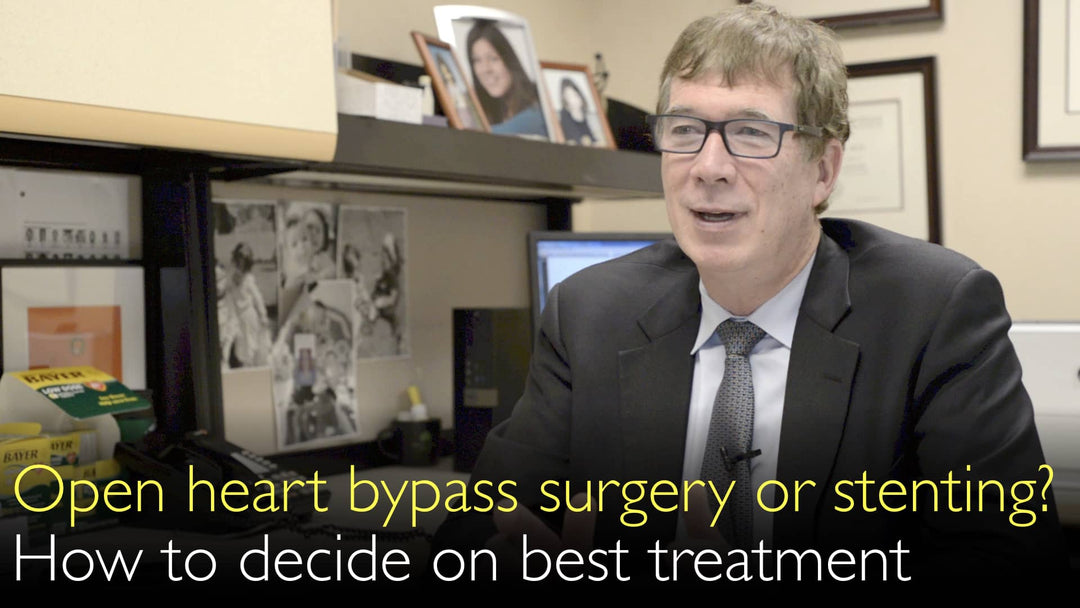מומחה מוביל בכירורגיית לב ובפרקטיקה רפואית בין-תרבותית, ד"ר Tsuyoshi Kaneko, MD, מסביר את ההבדלים העמוקים ביחסי רופא-מטופל ואת תפקיד חוות הדעת השנייה הרפואית בין יפן לארצות הברית. הוא מפרט את המודל הפטרנליסטי הנפוץ ביפן, שבו מטופלים בדרך כלל מקבלים את המלצות הרופא ללא עוררין, ומשווה אותו לדינמיקת היועץ-לקוח הנהוגה בארה"ב, שבה מטופלים משכילים משתתפים באופן פעיל בקבלת ההחלטות ופונים לעתים קרובות לחוות דעת שנייה. ד"ר Kaneko מנתח את היתרונות והחסרונות של כל מערכת, כולל ההשפעה על היררכיות ההכשרה הכירורגית והעצמת המטופלים.
יחסי רופא-מטופל וחוות דעת שנייה: ניתוח בין-תרבותי
קפיצה לפרק
- דינמיקה פטרנליסטית לעומת ייעוצית
- קבלת חוות דעת שנייה
- יתרונות וחסרונות של טיפול פטרנליסטי
- היררכיות בהכשרה כירורגית
- חוות דעת שנייה להעצמת המטופל
- תפיסה תרבותית כמרד
- קבלת החלטות רפואיות מושכלות
דינמיקה פטרנליסטית לעומת ייעוצית בטיפול רפואי
ד"ר צוושי קנקו, MD, מדגיש ניגוד יסודי בפרקטיקה הרפואית בין יפן לארצות הברית. הוא מתאר את יחסי הרופא-מטופל ביפן כ"פטרנליסטיים מאוד", כאשר הרופא נתפס כדמות סמכותית, או "האב", whose opinion patients are expected to follow. במודל זה, רופאים יפנים מציינים directly את המלצותיהם, והמטופלים מקבלים אותן relatively easily. Conversely, ד"ר קנקו observes that in the United States, the dynamic shifts to a consultant-client relationship. This is especially true in regions like the Northeast, where patients are often well-educated and research their conditions beforehand.
מודל ייעוצי זה means that American physicians field many questions and provide recommendations, but the ultimate decision to follow treatment or seek a medical second opinion rests with the patient.
דרכים שונות בקבלת חוות דעת שנייה
המושג של חוות דעת רפואית שנייה הוא מבדל key בין שתי הגישות התרבותיות הללו לשירותי בריאות. ד"ר צוושי קנקו, MD, notes that while the practice is trying to infiltrate Japanese medicine, its adoption is slow due to the entrenched paternalistic system. In the United States, seeking a second opinion is a normalized and often encouraged part of the patient journey, reflecting the proactive, informed nature of American healthcare consumers. Patients use it as a tool for validation and to ensure they are making the best possible decision about their care.
יתרונות וחסרונות של מערכת טיפול פטרנליסטית
ד"ר קנקו provides a balanced view of the Japanese paternalistic model, outlining both its advantages and significant drawbacks. A positive aspect is that it allows physicians to recommend what they genuinely believe is the correct treatment without immediate challenge, potentially streamlining care. However, this places immense responsibility on the doctor, who must bear the full weight of every decision. The major negative, as explained by ד"ר צוושי קנקו, MD, is the potential for harm if a physician is not acting entirely in the patient's best interest, as there is little built-in mechanism for the patient to question or verify the recommended course of action.
הכשרה כירורגית והיררכיות מקצועיות
ההבדלים התרבותיים extend beyond the clinic into the very structure of medical training. ד"ר צוושי קנקו, MD, compares the "very, very hierarchical" system in Japan and Europe, where a single professor acts as the "big boss" and subordinates must follow their lead, to the more egalitarian structure in the United States. While American hospitals have Division Chiefs and Department Chairs, individual surgeons are treated more equally and are encouraged to voice their opinions to leadership. ד"ר צוושי קנקו, MD, notes that Japan is undergoing a slow shift toward the US model, but it remains a deeply hierarchical community.
חוות דעת שנייה ככלי להעצמת המטופל
During his discussion with ד"ר אנטון טיטוב, MD, ד"ר קנקו clarifies the empowering intent behind seeking a medical second opinion. He agrees that it is not necessarily an act of contradiction but rather a proactive step for a patient to learn about their disease and build confidence. This process of consultation and verification can lead to a patient following their prescribed treatments with greater conviction and understanding, ultimately improving adherence and outcomes. This perspective frames the second opinion as a positive component of collaborative care.
תפיסה תרבותית של חוות דעת שנייה כמרד
In the context of a paternalistic system, the act of seeking a medical second opinion takes on a completely different meaning. ד"ר צוושי קנקו, MD, explains that within the Japanese "father" dynamic, going to another doctor for an opinion can be perceived as an act of rebellion or distrust against the primary physician. It is viewed as going against the authority figure's recommendation rather than as a smart, due-diligence practice. Consequently, ד"ר צוושי קנקו, MD, states that in Japan, seeking a second opinion can be considered rude, a stark contrast to its acceptance in the United States.
קבלת החלטות רפואיות מושכלות עם הקשר תרבותי
ד"ר אנטון טיטוב, MD, concludes the conversation by emphasizing the critical importance of understanding cultural context when navigating medical decisions. The insights from ד"ר צוושי קנקו, MD, reveal that a patient's approach to their care, their relationship with their doctor, and their willingness to seek additional opinions are deeply influenced by their cultural environment. Recognizing whether one is in a paternalistic system like Japan or a collaborative consultant model like the US is essential for both patients and physicians to communicate effectively and achieve the best possible health outcomes.
תמליל מלא
ד"ר אנטון טיטוב, MD: You were initially trained in Japan. You did your first surgical residency in Japan. Doctors in every country have different approaches to interaction with patients. Doctors select an appropriate treatment differently too.
ד"ר אנטון טיטוב, MD: What are some of the differences between Japan and the United States in terms of how medicine and surgery is done? Perhaps you could discuss some differences in communications between doctors and patients in both Japan and the United States.
ד"ר צוושי קנקו, MD: I can start with the doctor-patient relationship. In Japan, the doctor-patient relationship is very paternal. The patients seek opinion from the doctors. Patients often follow what they are being told, because the physician is "the father". The relationship is very paternal.
ד"ר צוושי קנקו, MD: The Japanese physicians tend to tell their opinion. The patients tend to accept them relatively easily. On the other hand, the United States is different. I see the patient-doctor relationship in the United States in this way. A physician is more of a consultant.
Many patients, especially in the Northeast of the United States [Boston, New York], are very well-educated. They actually study very well prior to seeing their own physician. The patient-doctor relationship here is more of a consultant-client.
We get asked a lot of questions. We give recommendations. But it is up to patients whether they follow the recommendation. Or they can seek a medical second opinion if they don't like it.
ד"ר צוושי קנקו, MD: The concept of second opinion is trying to infiltrate in Japan. But the doctor-patient relationship in Japan is very paternal. I think medical second opinion is not really infiltrating as fast as many thought.
A lot of patients in Japan tend to go to the doctor and just follow doctor’s recommendations. I think that has positive and negative sides. For the doctors, you can freely recommend what you think is correct. But it really puts the doctors in a tough spot.
Because they have to take the responsibility for all of their recommendations. The negative side of paternalistic patient-doctor relationship exists. If the doctors are not really thinking about patient's interest, then it can really harm the patient. I think it does have pros and cons.
ד"ר צוושי קנקו, MD: It's very hard for me to say which side is better.
ד"ר אנטון טיטוב, MD: Let’s discuss the structure of training of surgeons.
ד"ר צוושי קנקו, MD: Japanese surgeons are very hierarchical. They are much like the Europeans. They have one professor, who is the "big boss”. All other physicians have to follow the boss's lead.
ד"ר אנטון טיטוב, MD: The United States is different.
ד"ר צוושי קנקו, MD: Here we do have Division Chiefs, we have Department Chairs. But we are all individual surgeons under the Division Chiefs. So we are all treated equally. We have the voice to speak up to our Chiefs. That usually does not happen in Japan. It is much more hierarchical.
However, I did hear recently that hierarchy has been changing a little bit. Surgery training is trying to be more like the United States format. But it's still an ongoing process. I think Japan remains to be a very hierarchical community.
ד"ר אנטון טיטוב, MD: Patients might seek a second opinion. But it is not because they disagree with their physician. It is because they just want to make sure that what doctors are recommending is correct. Patients try to learn about their disease through expert medical opinion.
ד"ר צוושי קנקו, MD: Absolutely! Medical second opinion is not necessarily contradicting the treatment course that patients are prescribed.
ד"ר אנטון טיטוב, MD: Medical second opinion allows a patient to be more proactive. The patient is learning and having more confidence. Therefore, the patient is following the recommended treatments better.
ד"ר צוושי קנקו, MD: Correct. But in a paternal world, I think medical second opinion is viewed as a rebellion against the recommendation. You are going against "your father". I think that is a reason why medical second opinion is not viewed similarly as getting a second opinion is viewed in the United States.
In Japan, medical second opinion can be considered rude rather than a smart move.
ד"ר אנטון טיטוב, MD: Thank you for illuminating the differences between relationships between a patient and a physician in Japan and in the United States. It is important to make medical decisions with the cultural standpoint in mind.








